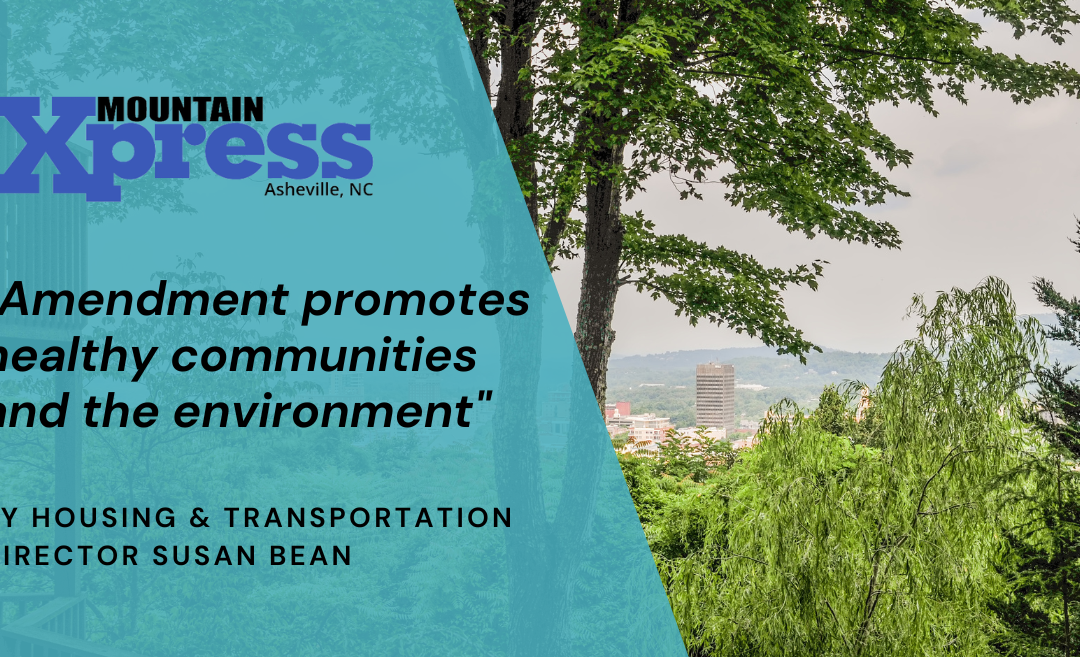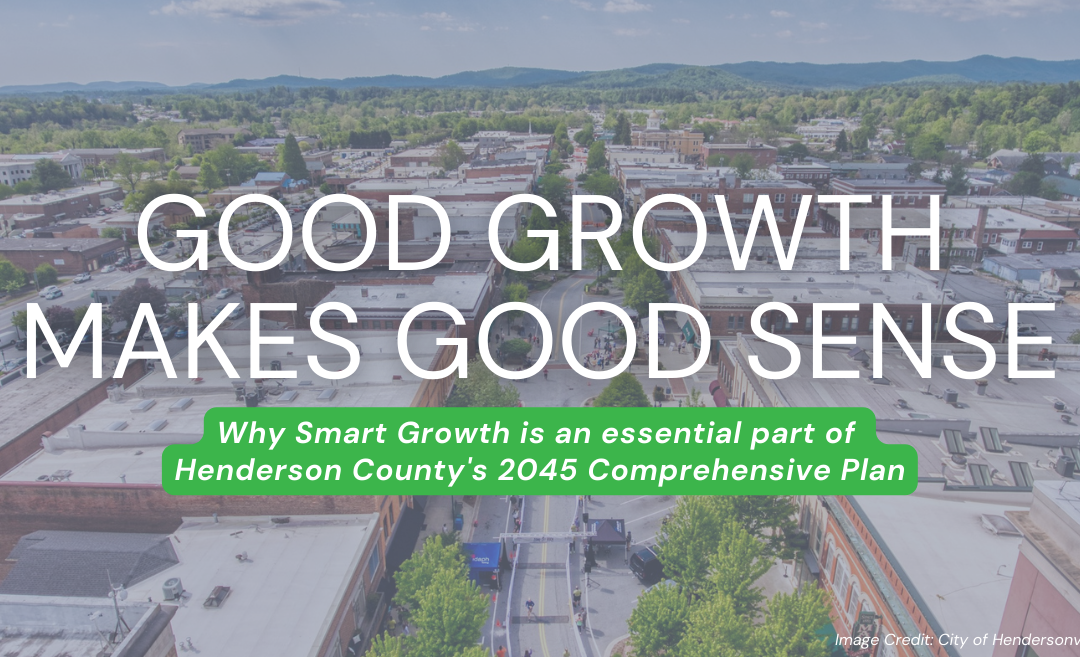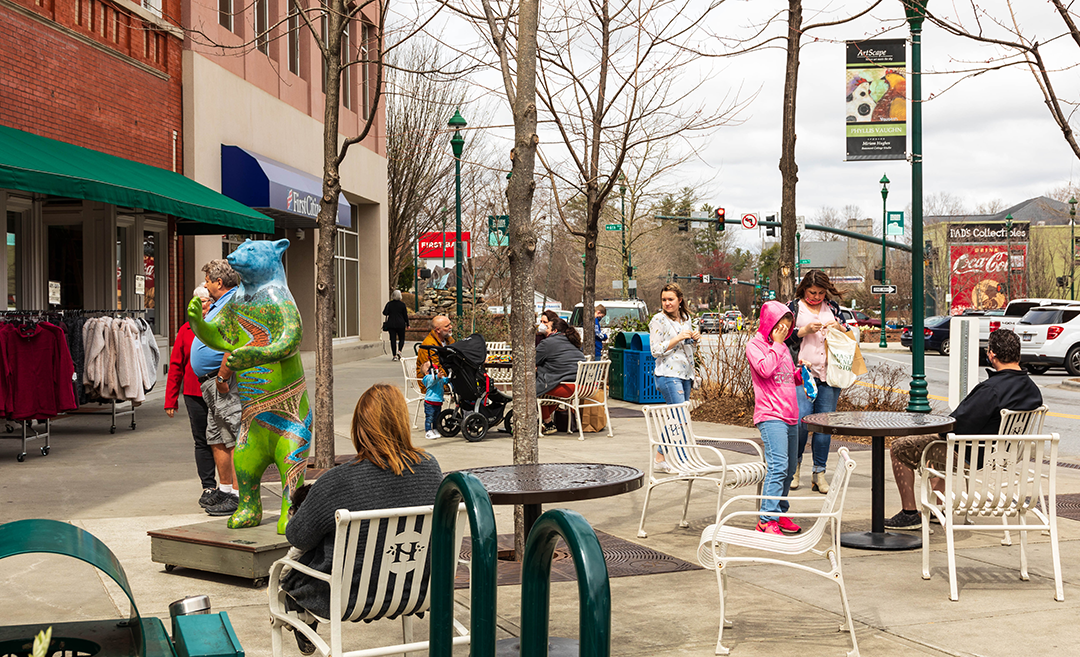
MountainTrue’s Susan Bean Writes About Asheville’s Open Space Amendment in MTX
MountainTrue’s Susan Bean Writes About Asheville’s Open Space Amendment in MTX
Mountain Xpress Contributor Piece written by Susan Bean, MountainTrue’s Housing and Transportation Director. Published March 21, 2022.
More neighbors? Yes, please!
I live in a neighborhood near UNC Asheville that I completely adore. I work with my neighbors to host pocket park workdays and annual block parties, and I’ve basically turned my yard into the neighborhood dog park. A 6-year-old two blocks over rides his bike to deliver a newspaper that he makes himself on single 8-by-10-inch sheets of paper announcing things like, “Halloween is coming! You’d better get your costume ready!” Obviously, I subscribe for a quarter a week because that is news I need.
Building healthy communities
I also work for MountainTrue, a nonprofit where we advocate on behalf of healthy communities across Western North Carolina. My neighborhood, in many ways, resembles the kind of healthy community we want to foster: one that is walkable, provides easy access to transit and has green space and tree canopy tucked in between houses and apartments. It’s downright charming.
We at MountainTrue believe that increasing housing in neighborhoods like mine that already have roads, water pipes, transit and neighbors is a good thing for our environment, which is why we support the open space amendment currently being considered by Asheville City Council.
Words like “density” and “infill” can cause concern in neighborhoods where people like things the way they are and don’t want to see trees cut down to make room for more buildings. However, Asheville needs more places for people to live, and we have an opportunity to meet that need by welcoming good development.
If given the opportunity to invite more people into my neighborhood by providing something like a duplex or a small apartment building, I would be sad to lose the trees that stand there but would welcome the chance to possibly gain more dog friends for my puppy or a new friend whom I could get milk from in a snowstorm when I badly need to make chocolate chip pancakes. It’s a trade-off I’m willing to make.
The ‘missing middle’
The open space amendment under consideration is designed with the intention of promoting more infill development of small housing units like triplexes and apartment buildings for eight or 10 units. Changing the open space requirements is a key step to achieving the goals of the “missing middle” housing policies (think duplexes, triplexes and modest courtyard apartments) that Asheville already adopted back in 2017. Some opponents of the amendment have painted a picture of the proposal as though it will turn Asheville into a treeless landscape of concrete that makes money for a few people and ruins the lives of those of us who live here, but that takes the neighbors out of the equation.
At MountainTrue, our mission is to champion resilient forests, clean waters and healthy communities. We love trees. We have staff members who have spent their whole careers fighting to protect old-growth forests, advocating for stream buffer protections and calling for fewer lanes of traffic on Interstate 26 so we can keep more old trees and old neighborhoods healthy and vibrant.
The reality of missing middle development is that people will live in those new homes if they get built. If they don’t get built in town, then those people will instead move to new homes farther from the city center, where acres of forest or farmland will be lost to build new roads, new suburbs and new grocery stores for those people to shop in. If we welcome them in town, we can save those forests and farmlands and maybe even make some new friends.
I hope you will join us in supporting adoption of the open space amendment. I also hope you will work with us to grapple with the complexities of how we will grow. Development in places with preexisting infrastructure is a crucial strategy for combating sprawl. It fosters both healthy communities and a healthy environment. And ultimately, we want both.
Susan Bean is the community engagement director for MountainTrue in addition to being an Asheville resident with wonderful neighbors.



